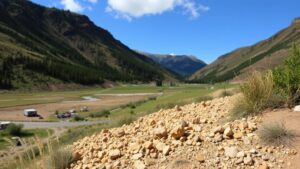The Role of Local Geography in Enhancing Dowsing Accuracy
The Role of Local Geography in Enhancing Dowsing Accuracy
Dowsing, often referred to as water witching, is the practice of using a forked stick, a pendulum, or other tools to locate underground water, minerals, or other hidden substances. While dowsing has been viewed with skepticism in scientific circles, many practitioners assert that the success of dowsing is significantly influenced by local geographical factors. This article explores how local geography enhances dowsing accuracy and provides a clearer understanding of this age-old technique.
Understanding Dowsing
At its core, dowsing is based on the premise that certain instruments can detect changes in the Earths energy fields. Practitioners often believe that localized geological features can create vibrations or energy signatures that are detectable through their chosen tools. Although independent scientific studies have shown mixed results regarding dowsings efficacy, many dowsers maintain that environmental factors play a critical role in its success.
Geological Composition
The type of geological material beneath the Earths surface plays a vital role in the effectiveness of dowsing. Common geological features that enhance dowsing accuracy include:
- Clay and Aquifers: Groundwater typically accumulates in aquifers composed of permeable layers, such as sand and gravel. Dowsing may be more successful in areas where clay acts as an impermeable layer, guiding water toward certain geological formations.
- Fissures and Fault Lines: Geological faults can create pathways for water flow. Dowsers often report higher success rates in areas with visible geological faults since these can facilitate the movement of groundwater.
For example, a study conducted in the Midwestern United States highlighted the success of dowsers locating water in regions where mineral compositions favored aquifer formation. Dowsers were able to pinpoint locations within a few feet of underground water deposits, correlating their findings with geological maps.
Topographical Features
Topography, the arrangement of the natural and artificial physical features of an area, can also impact dowsing accuracy. Key topographical factors include:
- Elevation Changes: Valleys often trap water, making them prime locations for dowsing. Dowsers frequently report higher success rates in lower-lying areas compared to elevated terrains.
- Proximity to Bodies of Water: Areas near lakes, rivers, and streams can have saturated soils, making dowsing easier due to the natural flow of water.
As an example, a team of dowsers working near a river in Texas demonstrated a high degree of accuracy when searching for underground water sources. By correlating elevation data and proximity to surface water features, their findings suggested that topography played a crucial role in their success.
Environmental Factors
The local ecosystem can also affect dowsing outcomes. Environmental considerations can include:
- Soil Composition: The presence of certain minerals in the soil, such as quartz or sulfides, can influence energy fields and aid dowsers in their search.
- Vegetation: As plants can indicate the presence of groundwater through their growth patterns, dowsers often observe local flora as part of their process.
For example, a case study from rural Australia showed that dowsers selectively chose their sites based on vegetation types, which often signaled underlying moisture. These observations align with botanical studies that showcase how certain plants thrive in areas with higher water tables.
Psychological and Cultural Factors
While local geography plays a tangible role in dowsing accuracy, psychological and cultural influences cannot be overlooked. Dowsers often report heightened sensitivity when they feel connected to a location, which can result from cultural belief systems or personal experiences. This aspect of dowsing highlights the intersection of science and subjective perception.
Conclusion: Actionable Takeaways for Dowsers
Understanding the interplay between local geography and dowsing practices can significantly enhance the odds of success for dowsers. To maximize dowsing effectiveness, practitioners should:
- Study local geological maps to identify favorable formations for water accumulation.
- Observe topographical features, pinpointing valleys and low-lying areas.
- Take note of soil composition and vegetation as indicators of moisture presence.
While dowsing remains a controversial subject, acknowledging the role of geography provides valuable insights. This understanding can empower both amateur and professional dowsers, enhancing their practice and potentially improving their outcomes in locating hidden resources.



